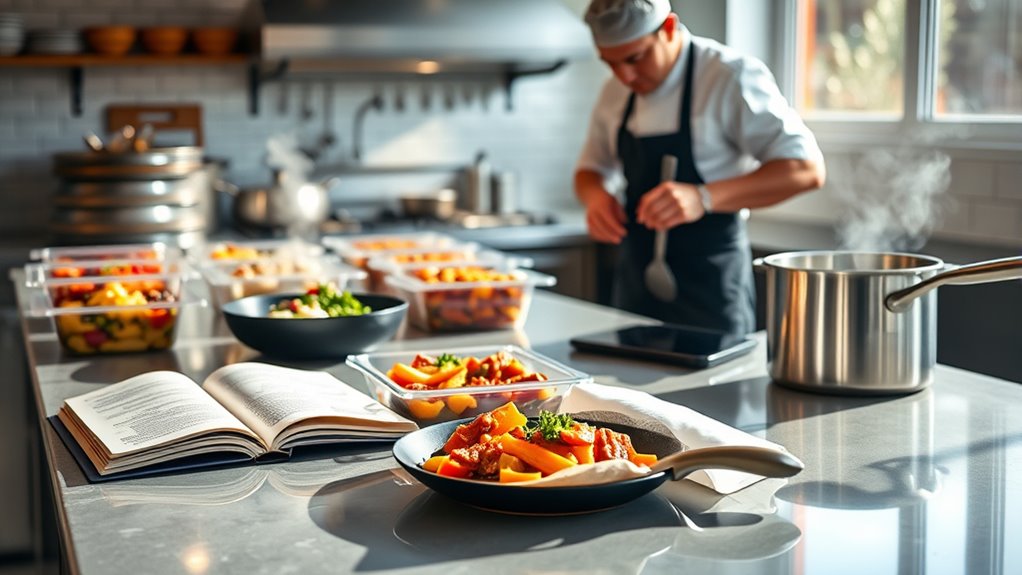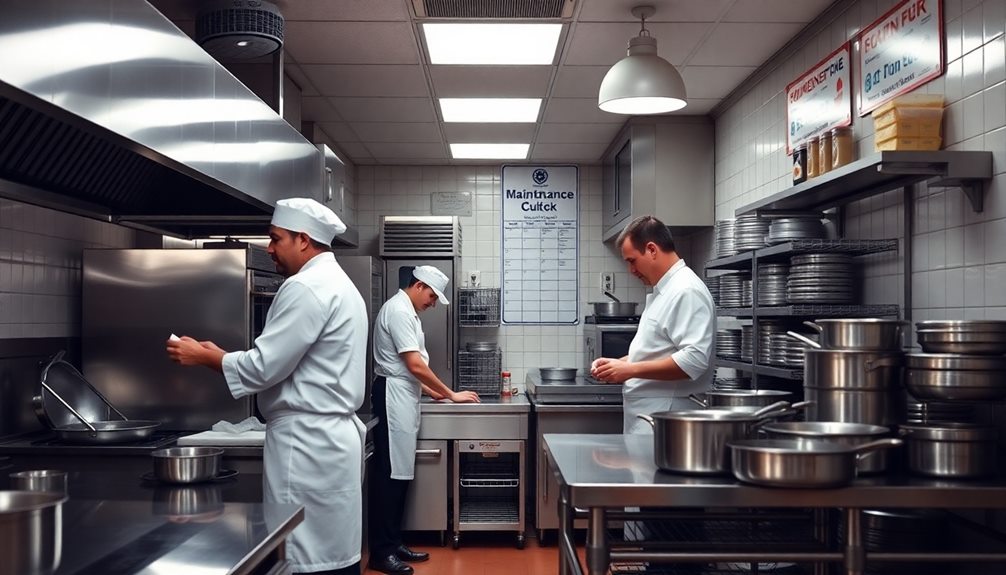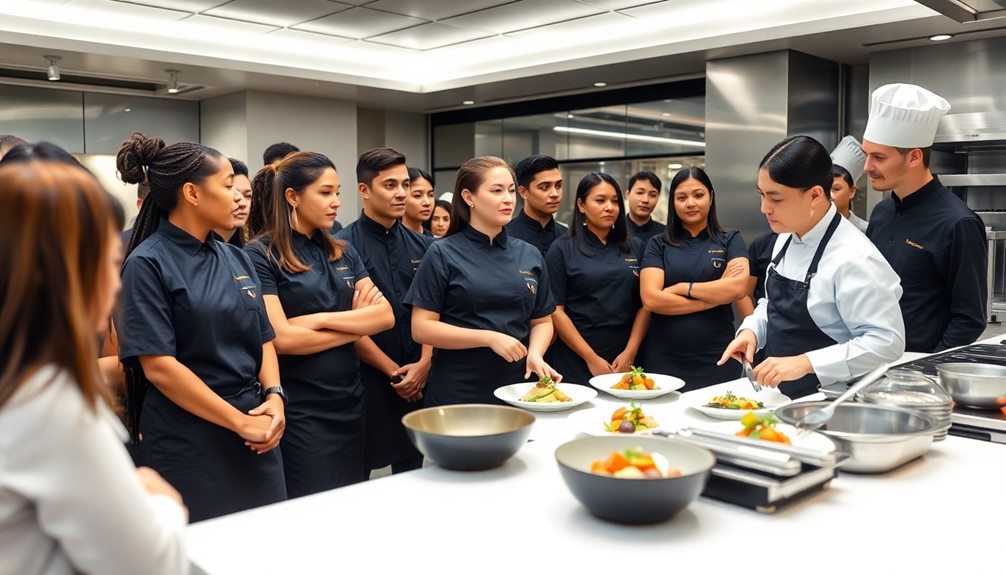Batch cooking saves time and offers convenience, allowing you to prepare multiple meals at once and reduce daily effort, but it can limit recipe variety and freshness. Cook-to-order meals provide fresh, customized dishes, though they may take more time and offer fewer leftovers. Your choice depends on balancing efficiency with meal flexibility and quality. If you keep exploring, you’ll discover how to manage these trade-offs for better meal planning.
Key Takeaways
- Batch cooking offers time savings and convenience but can reduce meal freshness and limit customization options.
- Cook-to-order provides greater meal flexibility and freshness but may require more daily preparation and time.
- Batch cooking is ideal for meal planning and reducing waste, while cook-to-order allows for spontaneous, tailored meals.
- Proper storage in batch cooking maintains quality, but reheating may cause nutrient loss and flavor degradation.
- The trade-off balances efficiency and consistency of batch cooking against personalization and freshness of cook-to-order meals.
Convenience and Time Savings
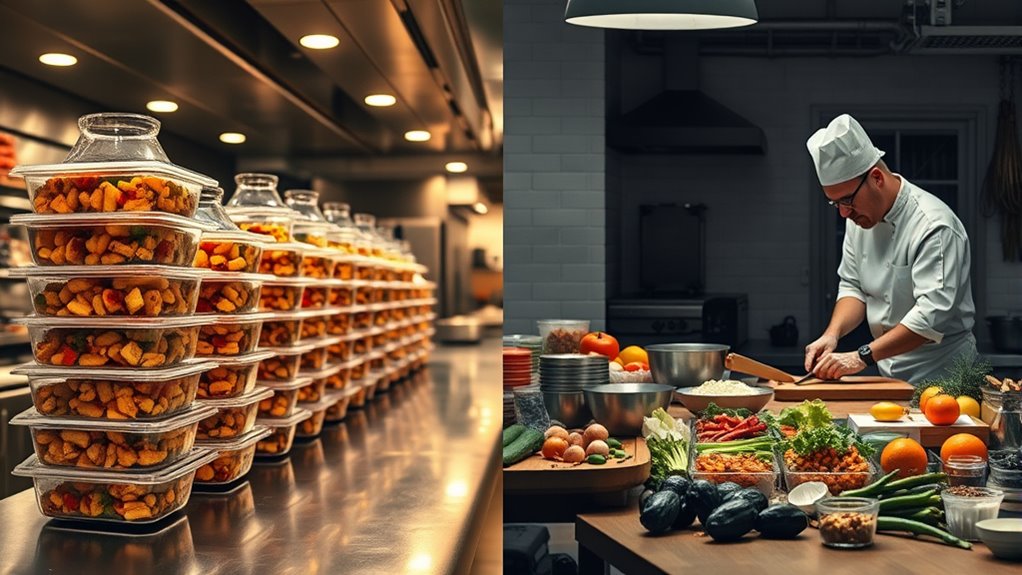
When it comes to convenience and time savings, batch cooking often proves to be more efficient because you prepare multiple meals at once, reducing daily cooking time. Instead of cooking every day, you set aside a few hours to make large portions that last several days. This approach means you spend less time chopping, measuring, and cleaning up daily. You can plan meals ahead, which minimizes last-minute decisions and avoids the rush of cooking during busy evenings. Plus, batch cooking helps you avoid repetitive daily routines, making your week smoother. With everything prepared in advance, you simply reheat and serve, freeing up your schedule. Overall, it’s an effective way to streamline your mealtime routine and maximize your free time. Incorporating meal planning strategies can further enhance your efficiency and ensure variety in your meals.
Freshness and Nutritional Value
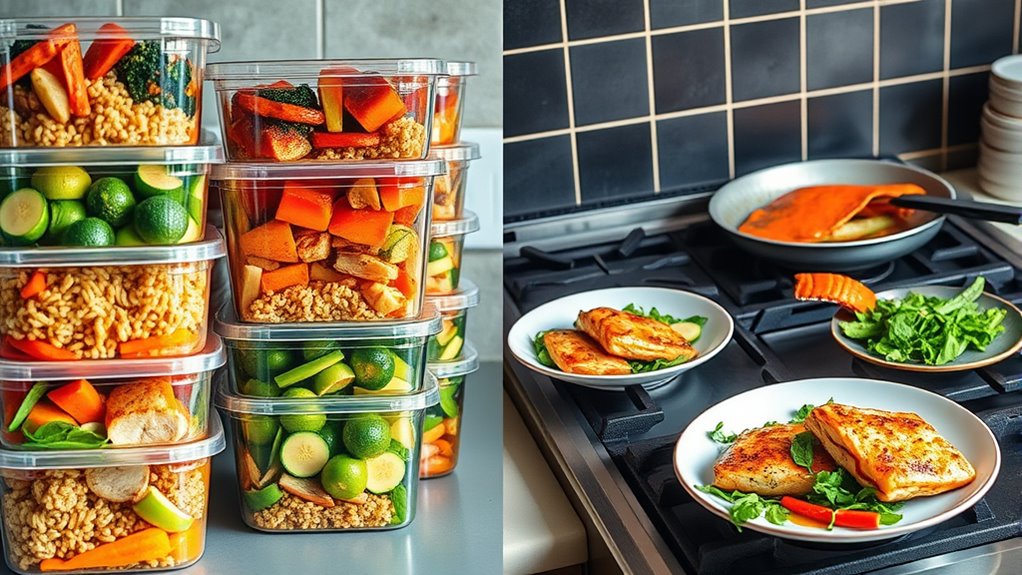
Batch cooking can sometimes compromise freshness and nutritional value because ingredients sit for extended periods before being eaten. When you prepare large batches, vegetables and proteins may lose their vibrant flavors and crisp textures over time. Nutrients, especially vitamins, can degrade with prolonged storage, reducing the health benefits of your meals. If you’re not careful with storage, foods can also become contaminated or spoil faster, further diminishing quality. While reheating is convenient, it can lead to nutrient loss, especially with heat-sensitive vitamins like C and B. To minimize these issues, store cooked foods properly, consume them within recommended timeframes, and consider quick reheating methods. Additionally, certain tuning techniques can help preserve the original quality of ingredients during storage and preparation. Although batch cooking saves time, it requires attention to freshness and nutritional preservation to maximize health benefits.
Variety and Meal Customization
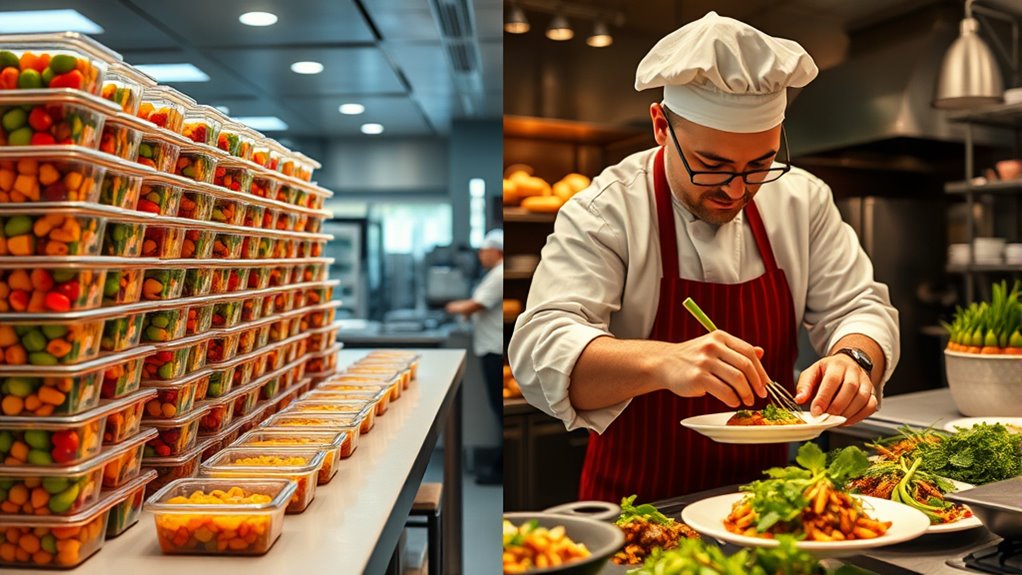
While batch cooking offers efficiency, it can limit your ability to customize meals and enjoy a variety of flavors. When you prepare large quantities in advance, you’re often stuck with the same ingredients and seasonings for multiple meals. This reduces the opportunity to tailor dishes to your current cravings or dietary needs. If you prefer diverse cuisines or enjoy experimenting with spices and toppings, batch cooking can feel restrictive. You might find yourself eating the same meals repeatedly, which can get dull. Conversely, cook-to-order methods allow you to choose fresh ingredients and adjust flavors on the spot, giving you more control over variety and personalization. This flexibility keeps meals exciting and better suited to your changing tastes and nutritional preferences. Additionally, preparing each meal using specific techniques can improve flavor and overall satisfaction.
Planning and Flexibility
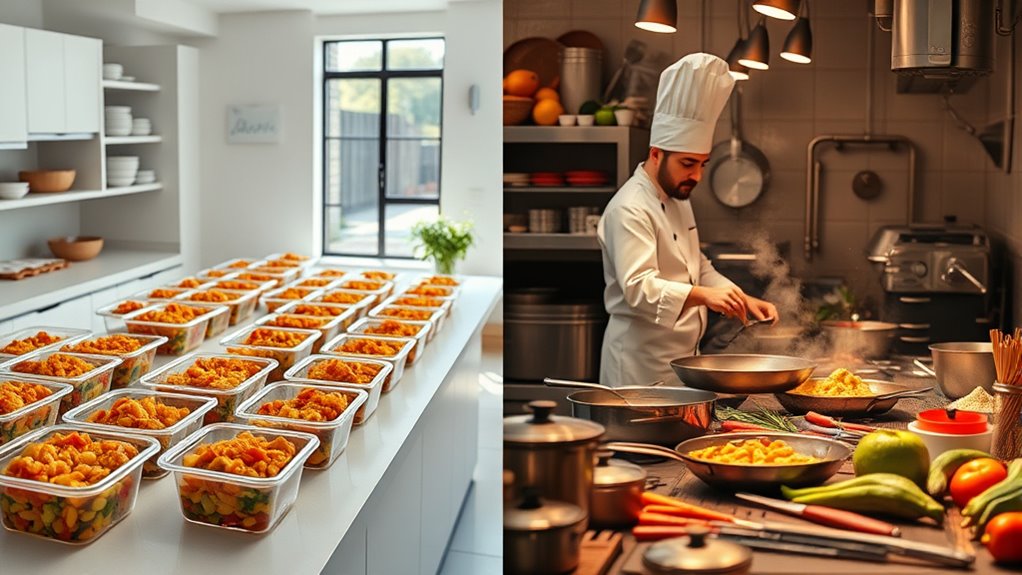
Planning ahead plays a key role in balancing meal variety with flexibility. When you organize your cooking schedule, you can decide which meals to batch prepare and which to make on the spot. This foresight helps you allocate time efficiently and adapt to changes in your week. Flexibility comes from leaving room for spontaneous meal ideas or last-minute cravings, so you don’t feel restricted by your plan. It’s helpful to create a weekly menu that includes both pre-made dishes and fresh options. Being intentional with your planning allows you to enjoy the convenience of batch cooking without sacrificing variety. Additionally, integrating reliable electric bike conversion kits can streamline grocery trips, making it easier to stay flexible with your meal planning. By adjusting your plans as needed, you maintain control over your meals while staying adaptable to unexpected events or changing tastes.
Storage and Food Waste Considerations
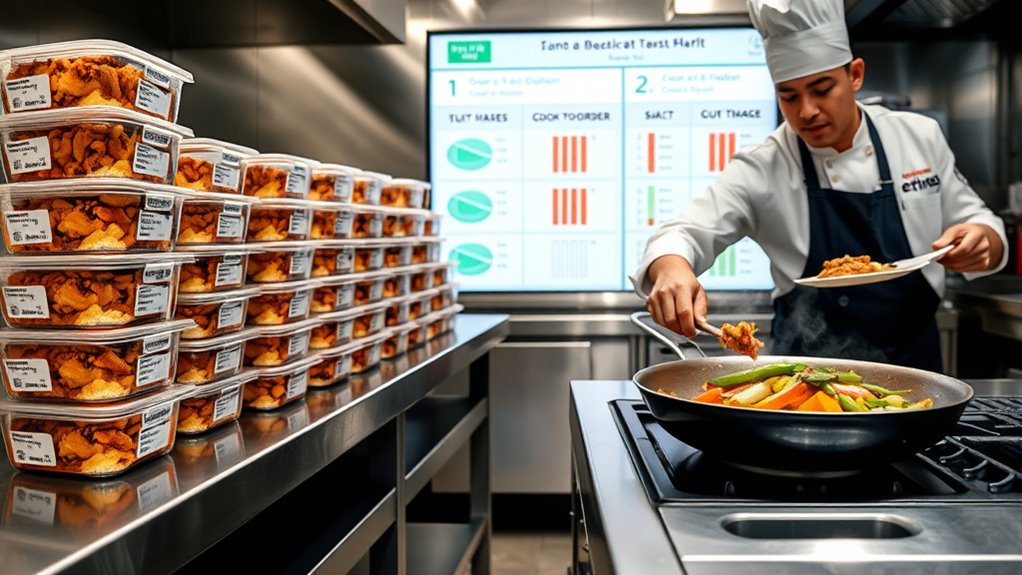
Effective storage is essential to maximize the benefits of batch cooking and minimize food waste. Proper containers, labeling, and temperature controls help preserve freshness and prevent spoilage. Store cooked meals in airtight containers and divide large batches into smaller portions to make reheating easier and reduce waste. Keep track of expiry dates and consume older items first. When storing leftovers, consider the ideal fridge and freezer temperatures to slow bacteria growth. Avoid over-purchasing ingredients to prevent excess food from going bad. Regularly check your storage areas for spoiled or expired products, discarding them promptly. Investing in good storage solutions and maintaining organization ensures you use your prepared food efficiently, reducing waste and saving money in the long run. Proper temperature control is also crucial for maintaining food safety and extending shelf life.
Frequently Asked Questions
How Does Batch Cooking Impact Meal Pricing Over Time?
You might notice that batch cooking can lower your meal prices over time. Since preparing large quantities reduces ingredient waste and saves on labor, you benefit from economies of scale. These savings often translate into more affordable meals for you and your customers. While initial setup costs may be higher, the ongoing savings help keep prices stable or even reduce them, making batch cooking a cost-effective strategy in the long run.
Can Batch Cooking Accommodate Special Dietary Restrictions Effectively?
Think of batch cooking as a well-oiled machine capable of handling special dietary needs. You can easily set aside portions for gluten-free, vegan, or allergy-friendly meals, ensuring each customer gets personalized care. By prepping in advance, you reduce cross-contamination risks and maintain consistent quality. This method lets you adapt quickly, making it an effective way to meet diverse dietary restrictions without sacrificing efficiency or flavor.
What Are the Environmental Impacts of Batch Cooking Versus Cook-To-Order?
When comparing the environmental impacts of batch cooking and cook-to-order, you find that batch cooking generally reduces food waste and energy use because it prepares large quantities efficiently. However, it might lead to more leftovers and packaging waste. Cook-to-order minimizes waste but uses more energy per meal due to repeated cooking processes. Balancing these methods depends on your sustainability goals and operational efficiency.
How Does Batch Cooking Influence Social Dining Experiences at Home?
Imagine gathering friends around your table, where the aroma of a prepared meal sparks conversations. Batch cooking at home creates this moment effortlessly, fostering shared experiences and reducing stress. While you might miss the spontaneity of cook-to-order meals, you gain the warmth of tradition and connection. This approach encourages longer, more meaningful social dining, making your home a true hub of togetherness and comfort.
Are There Health Risks Associated With Reheating Pre-Cooked Meals Regularly?
Reheating pre-cooked meals regularly can pose health risks if not done properly. You might accidentally promote bacterial growth if you leave food at unsafe temperatures or reheat unevenly. To stay safe, always reheat thoroughly to steaming hot and store leftovers promptly in the fridge. Avoid reheating multiple times, as this increases the risk of foodborne illnesses. Proper handling and reheating practices help you enjoy pre-cooked meals without health concerns.
Conclusion
Choosing between batch cooking and cook-to-order depends on your priorities. Batch cooking can save you up to 30% of your weekly meal prep time, but may sacrifice some freshness and customization. If you value quickness and convenience, it’s a smart move. Remember, over 40% of food in the US is wasted—so planning meals carefully can reduce waste and save money. Weigh these trade-offs to find what works best for your lifestyle and goals.
